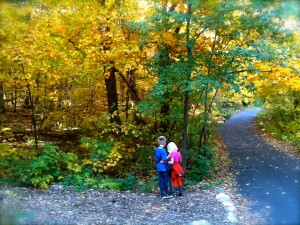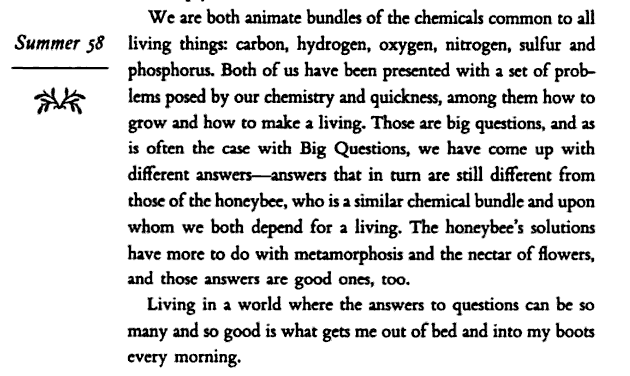Note: As I mentioned in my last post, at the end of the week I will celebrate having lived 8 years in my house in South Minneapolis. This momentous occasion (8 years is, by far, the longest that I’ve ever lived in one place) makes me want to reflect on the meaning of home. I hope to do that in a series of posts over the next couple of days.
Throughout my graduate work, I was interested in theories about home and homespace. Reading Bernice Johnson Reagan, bell hooks, Chandra Mohanty, Minnie Bruce Pratt, Carole Boyce Davies, Trinh T. Minh-ha and many others, I critically explored what it means to have a home and to belong (to a place, communities, identity). Much of my explorations came out of critical discussions about the limits of identity politics within political movements like feminism. Perhaps the biggest question that I consistently posed was: How do we negotiate the tension between a desire to belong to an identity/community with the need to be critical of that identity/community? This question came out of my own investments in maintaining a critical distance (a troubling space) from my own identity/identities and communities of belonging. I wasn’t interested in rejecting or leaving any of my homespaces. Instead, I wanted to find room to have a troubled/troubling relationship to them. But, I wasn’t sure if maintaining a critical distance would allow for that; it seemed to demand that I permanently inhabit a space of not-quite-belonging.
This tension between belonging/questioning was the subject of my master’s thesis, “The Longing to Belong: Feminism and the Desire for Identity.” It was also the topic for one of the chapters in my dissertation: “In-Between Home and Coalition: Feminist Democracy and Alliances that Work.” And, it was the underlying motivation for the two farm films that STA and I completed in 2001 and 2002.
While looking through my old files (one of these days I will get around to cleaning up and organizing them…ha!), I found my funding proposal for this second farm film. I was requesting travel and materials money for a month-long visit in the summer to the farm in Amasa, MI. I want to post part of it here because it’s one example of how I was attempting to translate the theories I was learning in my PhD program at Emory into meaningful accounts of my own experiences and understandings.
Here’s my project description:
I am requesting summer funding from the Institute for Women’s Studies so that I may continue my autobiographical film project in the Upper Peninsula of Michigan. Having already completed one short (23 minutes) film, this summer I would begin preliminary work on the second in a series of three short documentary/ autobiographies.Together, these three short film autobiographies serve to tell my story through the voices of my family and recollections/memories and visual images of my family’s farmhouse and 80 acres of land in Amasa, Michigan. All three films address issues of identity, selfhood, memory and tradition in their depiction of my struggles (1) to negotiate between my past, present and future identities and (2) to answer the question: How can I honor my heritage without mythologizing it? In my first film (already completed), I focused on introducing these issues and exploring how my family has tried to honor the farm by redefining the kind of “work” that is performed at it. In the second film, I hope to expand on those ideas, paying particular attention to the women of the farm and their changing roles within the family and community.This film will weave together the stories of the Puotinen family women—starting with my great-grandmother Johanna, who came to the US from Finland and helped build the farmhouse in the early 1900s, and continuing through the generations to my 3 year old niece, Isabel.This summer, I will be collecting materials (photographs, letters, memoirs), interviewing immediate and extended family members and filming in and around the Amasa area.
And, some of key questions that I hoped to explore:
1. How do I tell my story? How is my story complicated and enriched by others? How can I tell a story that reflects the fundamental ways in which I am a social being? This semester I am taking Professor Pam Hall’s class on Narrative and Female Selfhood. In that class, we are discussing theories on narrative selfhood and the importance of stories for shaping who we are and how we understand ourselves. Several issues that the class raises for me concern how our stories are told, how those stories intersect and are shaped by other stories and how we negotiate between the different stories that we live.These issues serve as an underlying guide for my film project. In this project, I hope to tell my story as one that is inextricably tied to my family (past, present, future) and our land.This story will not be done as a conventional autobiography by an autonomous “I”. Instead, (only) through the words and stories of my family and the images and stories of the farmhouse and land, I will construct my narrative of selfhood.This narrative will not be mine alone, but will also be the story of the farm and the women who are connected to it.
Note: I remember that this issue of how to insert myself into these stories was a big one for me. I kept asking myself, how much of me (in images and interviews) should I include? Ultimately, logistical difficulties resulted in not much of my own speaking throughout the film. This question of how to imagine/represent myself is still one that I’m struggling experimenting with in digital video.
2. How can we honor our histories without mythologizing them? How do I honor my heritage without romanticizing it? How do I negotiate the tension between belonging to a community (or family) and being critical of that community? In my own theoretical work, these questions are connected to the feminist movement and the need for feminists to have a critical, yet respectful, connection to the past, present and future of feminism and its communities. I have been interested in exploring how feminists can recognize and be critical of the limitations and the dangers (exclusion, essentialisim, etc.) of feminism and its theories and use that critique to transform the movement in ways that honor the larger goals of feminists without repeating their mistakes. In this film, these issues will be addressed through an examination of my place in the history of amazing Puotinen women. My goal will be to honestly, critically and respectfully tell their stories. And, to explore ways in which those stories and the traditions and goals that they embody can be honored and continued in new and possibly better ways.
3. How is my identity/identities connected to a desire for a heritage/ history and a sense of belonging? How and why is that belonging inextricably tied to land? How is my own story told geographically and spatially, through the family farmhouse and land? Although there are a number of ways in which these questions connect with my work (including home as metaphor for identity), I am particularly interested in the ways in which the physical homespace and land function as storytellers. In a sense, the farmland and its buildings are a story that documents the history of the Puotinen family. But, this land does not simply tell my (or my family’s) story. It tells its own story, one in which I must fit my story.With this in mind, I have entitled this film project,The Farm:An Autobiography.And, I hope to explore and experiment with the ways in which the land and the farmhouse are an important part of my autobiography and the biographies of Puotinen women.
 Happy October! It wasn’t entirely intentional, but September turned out to be a month of revisiting and exploring one troubled state that I’ve written a lot about over the years: grief. Grief over a dead mom. Over feelings of home that no longer exist. Over a career path that I’m no longer so passionate about. Now that it’s October 1st, I’m ready to shift my emphasis away from grieving and back towards living. I’m really drawn to, sometimes in spite of myself, the binary of grief/life. I like playing with the tension that surfaces when I put these two beside each other.
Happy October! It wasn’t entirely intentional, but September turned out to be a month of revisiting and exploring one troubled state that I’ve written a lot about over the years: grief. Grief over a dead mom. Over feelings of home that no longer exist. Over a career path that I’m no longer so passionate about. Now that it’s October 1st, I’m ready to shift my emphasis away from grieving and back towards living. I’m really drawn to, sometimes in spite of myself, the binary of grief/life. I like playing with the tension that surfaces when I put these two beside each other.
